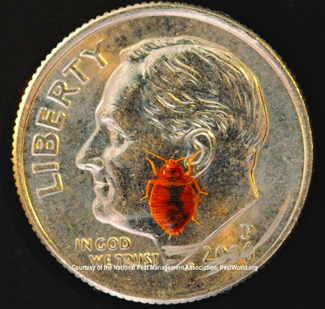Bed bugs are true bugs
By Chris Williams on May 21, 2015.
 Here is a brief lesson in Entomology. All bugs are insects, but not all insects are bugs. At first, this statement might seem false, but in actuality, it is technically true. I think we tend to lump all insects into a homogeneous group depending upon how we feel about them. For some of you, “I hate bugs” fits whereas in my case, all bugs fascinate me.
Here is a brief lesson in Entomology. All bugs are insects, but not all insects are bugs. At first, this statement might seem false, but in actuality, it is technically true. I think we tend to lump all insects into a homogeneous group depending upon how we feel about them. For some of you, “I hate bugs” fits whereas in my case, all bugs fascinate me.
What makes a bug a bug and not a beetle, fly, or a wasp? For many insects, the ordinal name they’re assigned can be descriptive of the type of wings they possess. For example, beetles belong to the insect order Coleoptera which means sheath wings. The prefix coleo = sheath or shell. Ptera = wings. The ‘true bugs’ belong to the insect order called Hemiptera (hemi = half). The front part of the wings of most species of Hemiptera are ‘leathery’ in appearance while the rear portion is membranous. Many true bugs are very strong fliers such as the stinkbugs, and leaf-footed bugs (western conifer seed bug).
A really noteworthy ‘true’ bug that I’ve been dealing with a lot lately that frequently makes news today has evolved to the point of being completely wingless. The bedbug is so highly adept at finding new hosts simply by hitching a ride (in a suitcase, on a bus, or on a plane etc.) that it has totally abandoned the need for flight.
The other major characteristic that distinguishes the ‘true bugs’ from most other insects are that their mouthparts are housed within a segmented beak designed to pierce their food source and ingest fluids. Bed bugs certainly qualify here as ‘true bugs’ even if they’ve lost their ability to fly.
True bugs exhibit every type of behavioral lifestyle imaginable from blood feeding ectoparasites like bedbugs and kissing bugs to predators to plant feeders in both aquatic and terrestrial habitats. Now you know what makes a bug a bug!